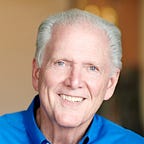7 Simple Decisions that Drive Your Strategy
In today’s environment, good execution and good operations aren’t enough. You may manage the day-to-day profitably and solve problems as they happen. But many companies often stagnate. Competition becomes stronger and clarity on differentiation becomes fuzzy. Simply put many companies lack a clear strategy.
Can you state your company’s strategy simply? Is it driving sustainable growth?
Many businesses think they have a strategy, but usually what they have done is focus on steps, goals, and objectives or issues owners and leadership teams often think about. To have an effective sustainable strategy, let’s be clear on what strategy is not.
- We may want to grow — but growth is not a strategy.
- We may want to go international — but going international is not a strategy.
- We may want to improve our businesses — but improvement is not a strategy.
- We may want to be more efficient — but efficiency is not a strategy.
- We may want to consolidate — but consolidation is not a strategy.
- We want to be beat our competitors — but beating our competitors is not a strategy.
These are all steps we can take — they are not strategies. Many companies become fixated on a particular step or objective and consider it to be their strategy. These companies then literally go over the cliff, because people do not know why they are doing those things.
Mastering 7 Decisions of Strategy
Strategy is all about the competitive advantage you are able to sustain over time. Patrick Lencioni (author of The Advantage) states that strategy in the simplest form is your plan for success. It is a collection of intentional decisions your company makes to give itself the best chance to thrive and differentiate from competitors.
Verne Harnish helps entrepreneurs and leaders develop their strategy by focusing on intentional decisions in his book, . He provides a comprehensive tool called the 7 Strata of Strategy that helps define a decision framework to dominate your industry. Here are seven key decisions to develop your strategy.
1. What are your Key Words?
Who are you and what are you about? Your potential customers need to clearly know and understand this. Harnish suggests we all have one or two key words that we own. His is growth. Google owns search. FedEx owns overnight delivery. Mine is clarity. What word(s) do your targeted clients perceive you own?
2. Who are your Core Customers?
Your success depends on the best-fit customer most likely to buy your product or service in the quantity required for optimal profit. Not everyone is the right customer for your company. Focus on the ones who get the most value from your offering while becoming raving fans. All others are a waste of your time and resources.
3. What is your Brand Promise Guarantee?
A brand promise reduces your customer’s fear of buying from you. It is a differentiator. FedEx promises to deliver absolutely overnight or your money back. The key is to stand behind your offering in a meaningful way to your customers.
4. What is your One-PHRASE Strategy?
Can you state your strategy in a simple phrase or sentence? Think of it as the focus for the underlying activities that differentiate your company from your competition. Here are a few. Dell: Be Direct. E-Bay: Focus on trading communities. IKEA: Flat pack furniture. Apple: Closed architecture. Harnish discusses Apple’s closed-architecture approach as an example. Customers may get frustrated, but it allows Apple to charge premiums while Google and Microsoft are caught in the commodity trap.
5. What are your Key Differentiators?
Robert Bloom (author of Inside Advantage) explains that it is difficult today to be unique. However, you can identify rare and valuable qualities or characteristics about your company that matter to your customers. Can you describe three things that your competitors can’t do or won’t do without great effort or expense?
6. What is your X-Factor?
Your X-Factor comes from creative innovation and dynamic brainstorming to help your company develop a 7–10 times advantage over other competitors in your industry. Harnish believes long-term success requires this underlying advantage over the competition that completely wipes out any and all rivals. See my article on this.
7. What is your Economic Driver?
Your economic engine is measured by one key metric that defines the essence of your business model and is tied to your long-range goal. And that metric is your revenue (or cash flow or profit) per “x.” See my article on this. Once you understand how you best make money, you can align that process with your aggressive long term vision and be off to the races.
A Real Strategy Forces You To Make Choices
You make clear choices about how you are going to compete and how you will make money in the future. You choose which customers you are going to focus on, and how you will position and deliver your offer in a way that makes you meaningfully different from your competitors.
What Is Strategy? by Michael E. Porter, argues that rivals can easily copy your operational effectiveness, but they can’t copy your strategic positioning-what distinguishes you from all the rest.
Only when you have a clear strategy that is well communicated throughout your organization, will you and your staff know exactly which things to say “YES” to, and which things to say “NO” to.
What do you need to stop doing — or just say “NO” to?
All the best
David
© 2015–2021 David Paul Carter. All rights reserved.
Originally published at https://www.davidpaulcarter.com on May 28, 2019.
